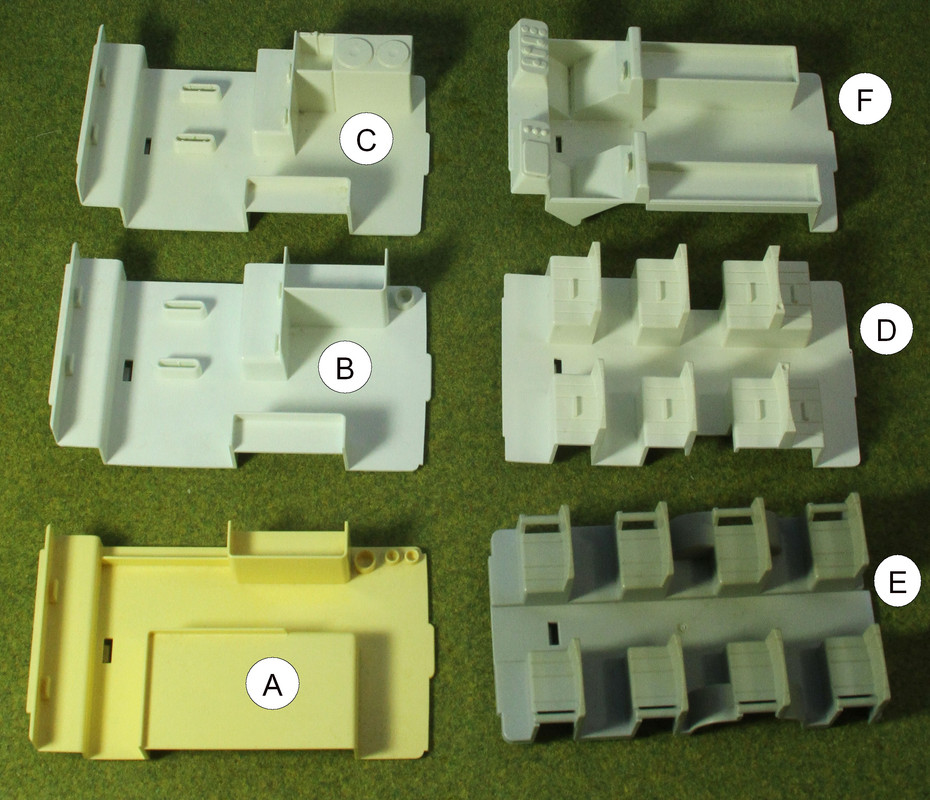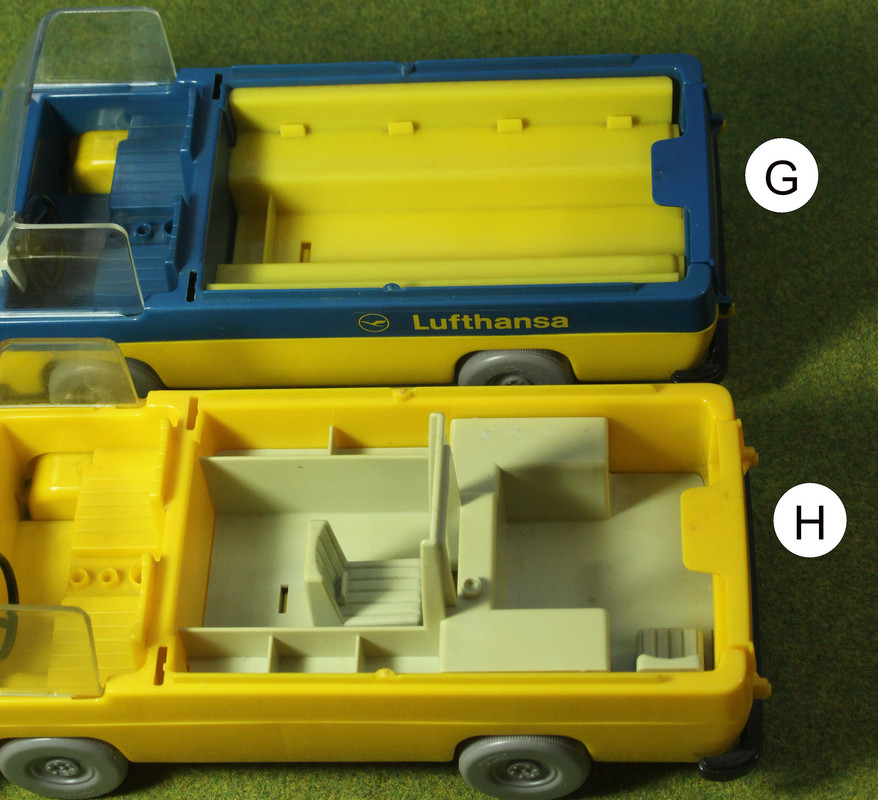I’ve been collecting early Playmobil ‘vans’. Between 1977 and 1990, Playmobil released 15 sets containing vans, all of which are constructed on a similar pattern. This includes one set from Playmobil (USA). At least another 41 sets containing vans were released by other licensees and subsidiary companies, but I haven’t included those (see
here for the full list). The vans included below are ambulances, police vans, camper vans, school buses, TV vans, an airport transport van and a post van. The internal layout and stickers differ according to the different purposes for which the vans were used.
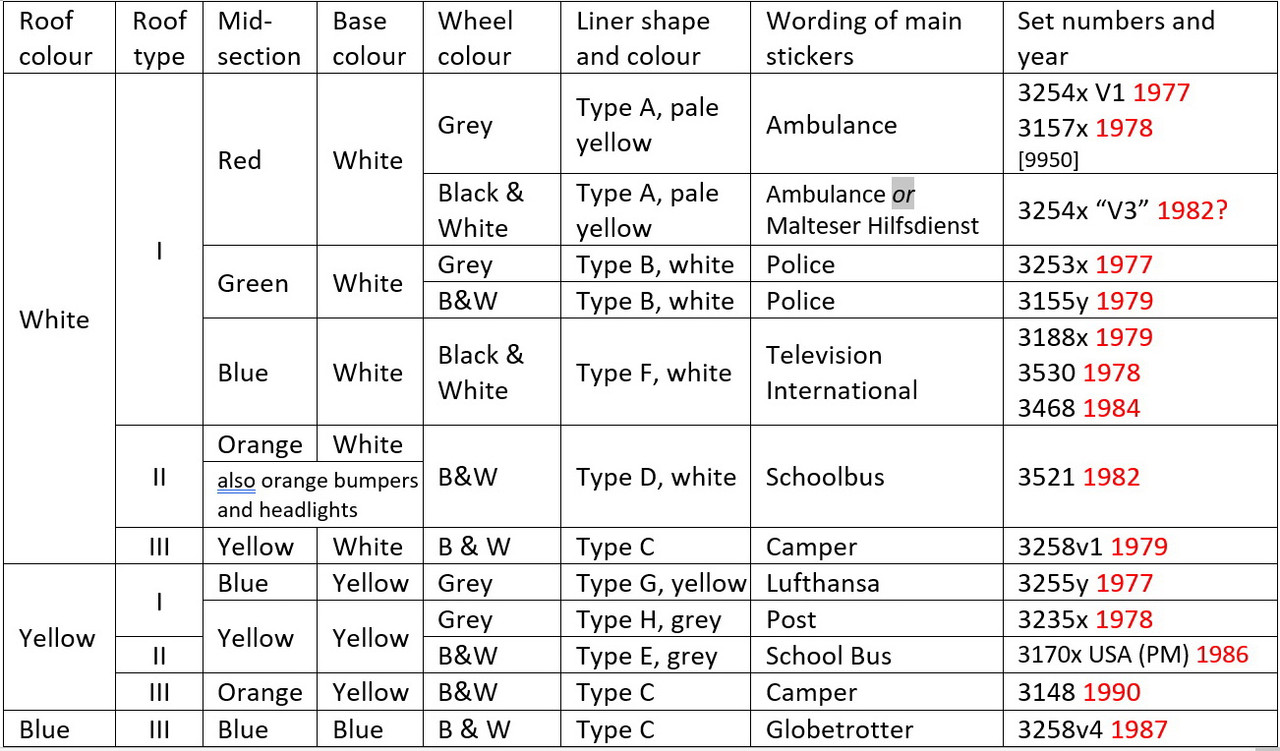
The accessories differ from set to set, but there are essentially 12 different vehicles in the 15 sets.
In theory all parts are interchangeable with corresponding parts in other vehicles. Each vehicle consists of 14 or 15 parts:

a. 2 pairs of wheels on a metal axle, 5 sets (all pre-1981) have grey wheels, 10 sets (all post-1981) have black wheels with white hubs
b. a windscreen, the same on all models, clear but often showing yellowing and distortion with age
c. a black steering wheel, the same on all models,
d. a grey steering wheel holder, the same on all models,
e. a front bumper (fender), black on all but one set, where it is orange,
f. a rear bumper (fender), black on all but one set, where it is orange,
g. a piece forming the two headlights and the radiator grill, black on all but one set, where it is orange,
h. a base, white yellow or blue,
i. a mid-section which forms the seats and dashboard as well as a ‘stripe’ around the vehicle, blue, yellow, red, orange, green and white. The same mold was used for all except the US schoolbus, which has a different arrangement for holding the klickies in the front seats,
j. a roof, white yellow or blue, in one of three types (see below),
k. a ‘liner’ with seats and other interior furniture, one of 8 types (see below),
l. an upper rear door, the same colour as the roof,
m. a lower rear door, the same colour as the mid-section.
Additional parts on some vehicles include:
n. warning lights (2 blue or 2 yellow or 4 yellow or 4 orange) on the roof,
o. decals/ stickers on the outside of the vehicle,
p. a table (usually green) on liner types B and C,
q. a sign across the front of the roof,
r. a camera platform.
The three types of roof are;
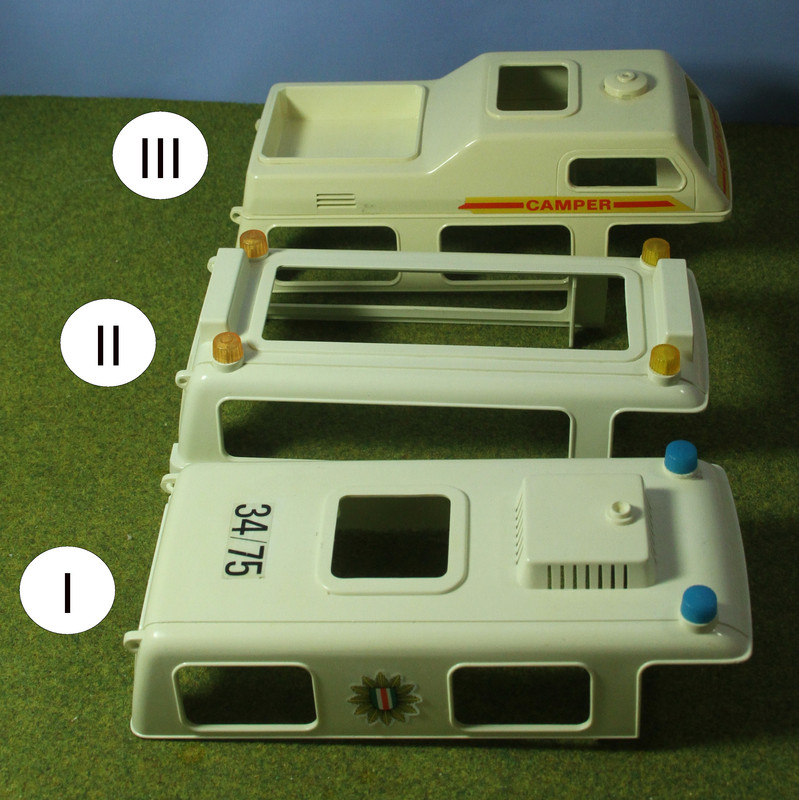
Type III roofs (on camper vans) are in two sections:
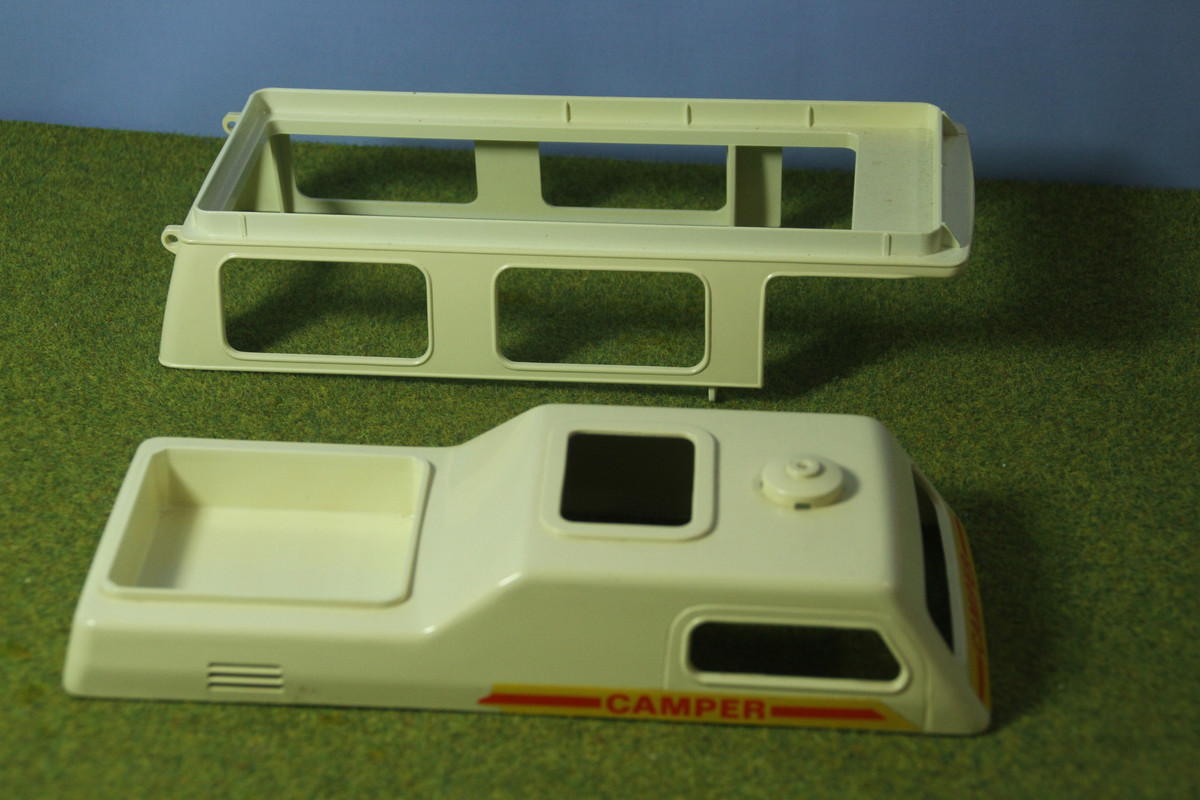
The ‘liner’ which fits inside the rear part of the vehicle comes in one of 8 types. Each of the seats in the liner, as well as the passenger seat in the front, have a small prong which holds the lower edge of a klicky’s torso when they are seated there (but in the schoolbus 3521, the seats in the back of the van have prongs positioned to fit into the gap at the top of the child’s legs, so adults sitting in these back seats are not held in place. In schoolbus 3170x, the seats do not have prongs; the front seats have blocks which hold the feet and the back seats (liner type E) have arms which the klickies can hold onto.
